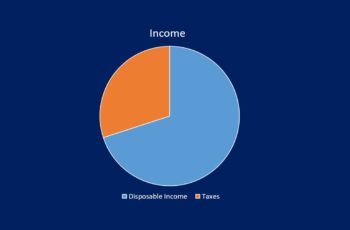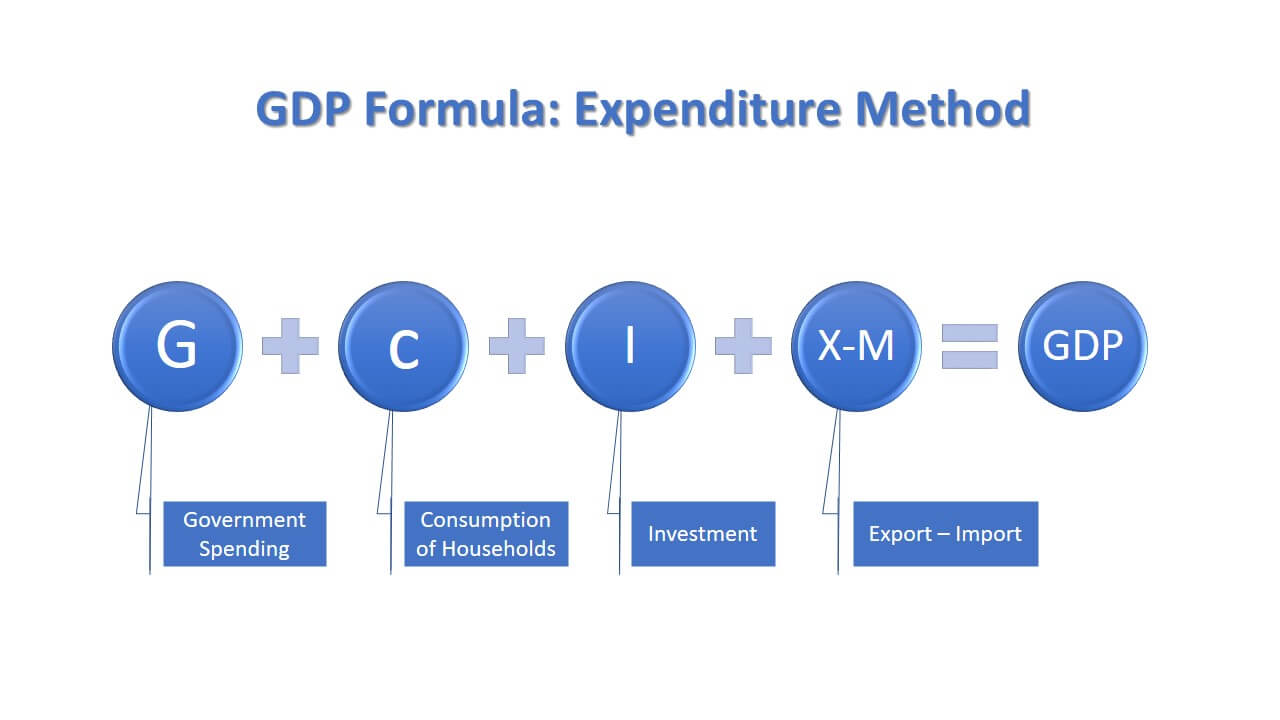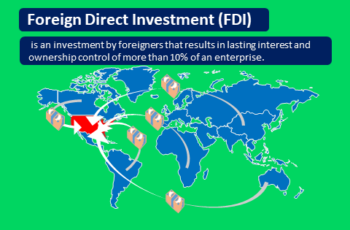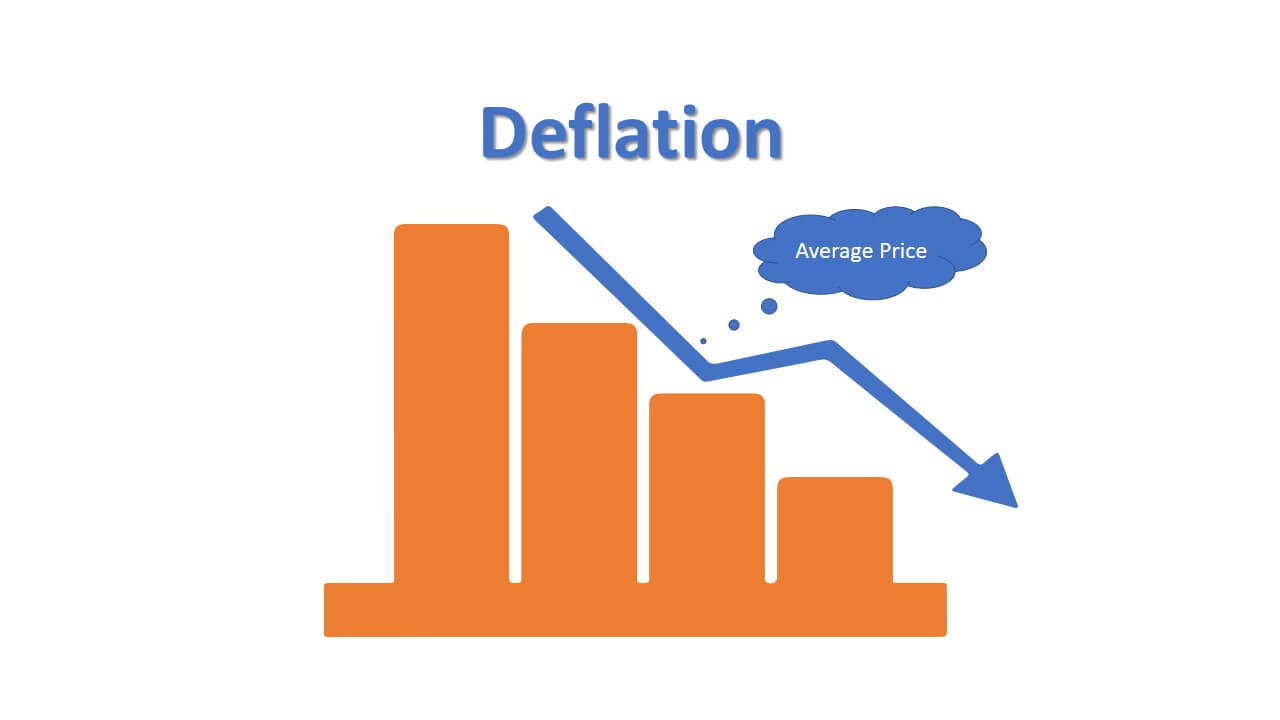What Is Capitalism?
Capitalism is an economic and political system in which the residents control the economy or own factors of production, not the government.
In other words, capitalism is an economic system in which residents make economic decisions and answer economic questions, not the government.
Residents are natural and legal persons. A natural person (ex: David) is a human being entitled to rights and obligations. A legal person (ex: a software developer company) is an entity that is not a human being but the law recognizes as having a legal personality.
In pure capitalism, the government has no economic power. In other words, in pure capitalism, the government has zero influence on the economy.
The policy in which the government has no economic power is known as laissez-faire. According to Merriam-Webster, laissez-faire is a French word that means “allow to do.”
The proponents of laissez-faire believe that the society does not need the government. The market can regulate itself.
Why?
According to capitalism supporters, supply and demand fix everything. Here are some examples of how supply and demand fix the market:
- If a manufacturer prices its products too high, consumers will not buy them. So, the producer has no choice but to cut prices.
- For scarce goods, the one who pays the highest price will get them. For example, diamonds are scarce, and only rich people will buy them. There is no need for government intervention.
- If a society needs specialist doctors, due to the freedom of pricing of doctors’ services more adults will try to become specialist doctors. Over time, the needs will be fulfilled.
Characteristics of Capitalism
Capitalism is an economic system with the following characteristics:
1. Profit-driven Operations
Making a profit is the most prominent characteristic of capitalism.
In fact, capitalism is known for the pursuit of profit.
In this economic system, the primary goal of a business is to make a profit, and individuals seek financial gain.
Profit motivates businesses to make money to the extent they can without considering social and environmental impacts. For example, a factory will not care about air pollution if the government does not introduce regulations. The only that matters the most is money.
Social activists and communists blame the capitalist system for the greed and exploitation of workers to make a profit. Over time, businesses in a capitalist economy gain power by accumulating profits, lobbying in politics, and putting workers in less or no power positions.
Some Marxists and socialists believe that the accumulation of power and profit by minority tycoons will lead to late-stage capitalism and will lead to socialism.
2. Private Ownership
Private ownership is the second most popular characteristic of capitalism.
In capitalism, the private sector controls or owns most means of production. Means of production (land, capital, entrepreneurship) are inputs that humans use to produce goods and services.
The owners of means of production are free to employ their resources as they will under the umbrella of the regulations.
3. Inequality
Inequality means imbalance or disparity.
In economics, inequality refers to the level of differences between income, wealth, opportunity, etc. between individuals in a society. Inequality is the characteristic the critics of capitalism criticize the most.
- Income inequality: refers to uneven income distribution throughout a population. For example, on average, men earn more than women and managers make more than workers.
- Wealth inequality: refers to the unequal distribution of wealth across households or individuals. And wealth is the possession of valuable things such as property and money. In a capitalist economy, wealth inequality is higher than in a socialist and communist nation. A high-net-worth individual has more social power and can change circumstances more than poor and less fortunate people.
- Opportunity inequality: refers to unequal income variables over which individuals have no control, such as family socioeconomic status, gender, or ethnic background. For example, rich individuals can send their children to a better school and even hire a personal coach.
All of the above inequalities relate to each other. It means that one can affect the other one.
Capitalism produces inequalities. In a capitalist economy, rich individuals own the means of production. Means of production are everything (excluding labor) that is used in producing goods and services.
It also means that wealthy people have more power to use natural resources for their benefit. And poor people have no choice but to work for them and help them to grow richer. This trend continues and the disparity gets wider and wider.
4. Market Economy
Capitalism depends on free markets, where supply and demand set prices.
Buyers compete for goods, and sellers compete for buyers’ money. And they trade willingly without coercion.
In this system, buyers are free to spend their money on, and sellers are free to engage in any economic activity they want.
5. Innovation and Entrepreneurship
Capitalism encourages innovation and efficiency, leading to technological advancements and various goods and services.
To compete, suppliers need to be innovative and serve their customers which leads to profit.
6. Specialization
In capitalism, both companies and individuals specialize in something to be more productive. A company specializes in the process of producing one or multiple related goods and services. And a person focuses on becoming an expert in a particular subject or skill.
Specialization helps companies and individuals to be more productive and efficient in cutting costs and producing high-quality products. It reduces prices which is beneficial to customers.
7. Competition
Competition refers to attempting to establish supremacy or superiority over the opposition.
Businesses compete by being productive and efficient in producing goods. Competition leads to cheaper prices benefiting customers.
Benefits of Capitalism
Here are some well-known advantages of capitalism:
1. Producers and Consumers Have Freedom
Capitalism provides freedom for producers and consumers. Producers are free to produce whatever their skills match and are good at. Consumers are free to purchase any goods they wish from various choices.
However, laws and regulations exist to prevent harmful drugs and services to society. In that sense, a producer can not produce a harmful product such as cocaine, and the consumer can not buy it.
Moreover, because the government is small, the bureaucracy is also small. That enables individuals to enter and exit the market faster and easier.
2. Companies in a Capitalist Economy Is More Efficient
Because profit is the main motive of a producer, it strives to be efficient.
Efficiency cuts costs and minimizes waste. For a private company to maximize profit and compete in the market must be enough efficient and produce goods that are in demand. In contrast, a government company’s main goal is not to profit, which is why it is less efficient.
3. Competition Forces Companies to Innovate in a Capitalist Economy
Capitalism creates competition that leads to innovation.
Innovation is the practical execution of ideas that result in the introduction of new goods or services or improve providing goods or services.
Entrepreneurs and firms continuously seek to innovate and develop profitable products. So, they need to invest in new products, which may become very profitable in the future.
In contrast, in a governmental company due to bureaucracy for making economic decisions, innovation is not encouraged as much as in a private entity.
4. Economic Growth
In capitalism, consumption is encouraged, and manufacturers are incentivized to be productive and efficient.
So, both consumers and suppliers push the economy to grow.
Economic growth results:
- In decline in the unemployment rate;
- Economic stability;
- Trust and confidence in the economy;
- Real GDP growth;
- Raising living standards; and
- So on.
5. Quality of Goods and Services in a Free Economy Is Higher
In capitalism, producers manufacture goods of high quality to establish brands and foothold, such as Apple and Samsung. Moreover, private companies respond quickly to the needs of their customers and adapt to new technological environments.
Contrarily, a state-run company does not adapt quickly, and its product quality is hard to change due to a higher bureaucracy.
Criticisms of Capitalism
While capitalism has several advantages over communism, for example, economists also criticize the following disadvantages:
1. Capitalism Produces Inequality
Capitalism makes some rich and others poor. The trend of becoming rich individuals richer and poor individuals poorer continues in a capitalist economy.
It happens due to the self-interest of rich people (owners of means of production). For a country’s economy functions, it uses means of production (ex, natural resources) to produce goods and services. The rich people benefit the most by taking the profits. So, the nation’s wealth may concentrate in the hands of a few individuals, firms, or groups.
Over time, wealthy people increase their wealth by accumulating profit while the majority of residents work to survive and save for retirement.
As a result, rich individuals enjoy luxury lifestyles and poor people remain the same.
A huge gap between the rich and poor classes creates stability risks. It may encourage socialist movements to get bigger and even revolution in some countries.
2. Capitalist Economy Creates Monopoly, Oligopoly, Monopsony, and Oligopsony
Generally, there are numerous market participants in a free market. It makes unable a single company to have an impact on the market.
However, this is not always the case.
In a market economy or capitalism, companies can become huge enough to be a single player or one of a few players in the supply or demand side of the market. For example, if a company manages to develop a vaccine, it can charge as much as it wishes without patients’ will.
We call this phenomenon monopoly, oligopoly, monopsony, and oligopsony.
- A monopoly is a market in which there is only one supplier but a lot of buyers;
- An oligopoly is a market condition in which there are a few suppliers but a lot of buyers;
- Monopsony is a market condition in which there is only one buyer and a lot of suppliers; and
- Oligosony is a market in which there are a few buyers and a lot of suppliers.
What are the problems with monopoly and oligopoly?
The final cost-bearers of monopolies and oligopolies are consumers. It is worse if there are monopolies instead of oligopolies.
Here are some problems that consumer economists dislike about monopolies and oligopolies:
- The supplier can charge higher than the product’s value;
- Due to huge profits, the producer may not be willing to be efficient in using resources and unwilling to cut costs;
- The monopoly does not feel to innovate and increase the quality due to the non-existence of competition; and
- The number of consumer choices will be lower.
And what are the problems with a monopsony?
A monopsony occurs if suppliers are in a weaker position than the sole buyer.
This can happen in the labor market when there is a single factory in the community. The factory has the power to exploit workers by setting lower wages and employing fewer workers than required. Moreover, the working conditions may not improve, and productivity will be low due to low motivation.
Businesses can acquire monopsony power in buying raw materials too. For example, supermarkets can abuse their monopsony power to pay low prices to farmers for potatoes and tomatoes. If farmers don’t sell to supermarkets at a low price, their product quality may degrade and become unusable.
3. Capitalism Creates Externalities
An externality is the cost or benefit of an economic activity that an unrelated third party experiences.
There are two types of externalities: positive (external benefit) and negative (external cost).
An example of a positive externality is vaccination not only the one who gets it benefits but also other people in the community by lowering the probability of getting infected.
A negative example of externality is air pollution by a factory in a community.
And in this post, I mean negative externality.
The problem with external costs (negative externality) is that consumers and private firms often ignore these costs. And they only count private costs and benefits in making consumption or production decisions.
For example, air and river pollution created by industrial production harms and costs the environment and public health. However, these costs are not in the accounting book of factories.
Moreover, external costs hurt the ecosystem and native birds and animals.
4. Capitalism Generates Business Cycles
Business cycles occur in capitalist economies.
The business cycle refers to ups and downs in the economy. The four phases in the business cycle are recovery, peak, recession, and trough (bottom).
The profit motive in capitalism generates malinvestments, instability, and greed, causing recessions.
Here is the problem.
The economic instability and recession hurt the lower class (the majority of the population) the most. These people are the first who lose their jobs or houses (if purchased by leveraging a loan).
After losing houses by not wealthy people, lender confiscates putting more pressure on them.
Then, rich individuals step in purchasing auctioned houses at a lower price and selling them for huge profits years later.
This trend if continues which happens in capitalism, widens the gap between rich and poor people.
5. Private Sector Does not Produce Public Goods and Services
A public good is a product that everyone can use without reducing its availability to others. It is also known as social good and collective good. Examples are roads, bridges, and dams.
Here is the issue.
In capitalism, the private sector makes most economic decisions on what to produce, how to produce, and who gets it. And it is not interested in producing goods that do not generate profits.
Some infrastructures are essential, such as roads for the transportation of goods.
So, without government intervention, the private sector will not build roads because they are unable to charge a price for these goods due to their non-excludability and non-rivalry characteristics.
6. Short-term Focus Is Common in Capitalist Economy
In capitalism, publicly traded companies are common. They often face pressures to return profit as much and as quickly as possible.
But Why?
Because financial gains immediately impact stock prices in the stock exchanges.
That is why the profit motive of capitalism may lead businesses to prioritize quarterly profits over broader social issues, such as long-term sustainability, environmental problems, and more. Moreover, profit motive may lead businesses to exploit their workers by paying low wages and low standards of working place.
In contrast, in communism, the government makes long-term plans and prioritizes stability over short-term profits.
7. Narrowly Focus on Economic Growth
In capitalism, the economy narrowly focuses on the GDP growth. Other essential factors such as healthcare, happiness, and stability come next and next.
The problem is that lower-class individuals have fewer opportunities to enjoy a better life than rich guys.
For example, the minimum wage in a capitalist economy is lower than in socialist economies. As of 2024, the minimum wage in the USA is $7.25 which is more capitalist, and in Denmark, the minimum wage is approximately $18, considered relatively socialist. Comparing GDP Per Capita, according to Statista, in the USA in 2022 was around 76,343.25 U.S. dollars, while in Denmark about 67,000 U.S. dollars.
8. Innovation Is Not Necessarily a Product of Capitalism
Private firms indeed do their best to innovate in cutting costs and maximizing profits. But, they need the government for huge-budget innovations.
For example, GPS which is in every gadget, Satellite, Rocket Space, and even Touch Screen was invented with government help or a governmental entity.
Recent examples are EVs and clean energy. Almost every government around the world subsidizes or offers tax breaks to change consumers’ behavior.
Types of Capitalism
Capitalism is supposed to be an economic system in that supply and demand set prices and the government does not intervene.
However, this is not the case anymore.
The level of government intervention and some market participants made a variety of capitalisms.
Notice that you may hear various types of capitalism due to different opinions not mentioned here.
Here are four types of commonly discussed capitalism:
1. Laissez-faire or Free Market Capitalism
Laissez-faire which means “let do or let be” is a French word is a type of capitalism with minimal interference from the state. The government exists to protect ownership and introduce laws. It does not intervene in the market at all.
Initially, a capitalist economy was supposed to be Laissez-faire letting people do businesses that they want. However, protectionism and the national interests of countries changed and started intervention.
2. Welfare State Capitalism
Welfare state capitalism also can be called a social market economy.
In this economy, the government plays a major role. The state uses tools such as subsidies, taxes, and benefits to redistribute some of the resources to needy individuals.
Moreover, the government provides some services such as education and healthcare to all to equalize increasing opportunities for all.
Examples of welfare state capitalism are Nordic countries such as Denmark and Finland. In these countries, education is free, with some exceptions healthcare is also free, tax rates are high, inequality is low, and they are happier than other nations.
3. State Capitalism
In state capitalism, the government has a huge role. The state enters the market owning factories, and banks, and is involved in other crucial industries.
The main argument for the state entering the market is economic stability to serve underserved sections and control private companies from becoming too big.
The most well-known example of state capitalism is China. It makes multiple-year economic plans and strictly regulates private companies.
4. Crony Capitalism
Crony capitalism, sometimes also known as corporate capitalism, is an economic system where big corporations have a controlling position in the market. It is usually achieved through lobbying government officials.
Corporate capitalism may achieve an economy of scale resulting in low costs. Some companies may also gain power to exploit workers and achieve a monopoly.
Difference Between Capitalism and the Free Market
Capitalism and the free market are used interchangeably.
Sometimes they are the same, and sometimes not because the free market is a subset of capitalism.
In other words, the free market is an element of capitalism.
When economists and commentators mention capitalism, they often mean profit maximization and private ownership. On the other hand, when they mention the free market, they emphasize the freedom of exchange of goods and services based on supply and demand law.
Capitalism Short History
This section discusses the history of capitalism extremely briefly.
Capitalism has evolved as time passed. They do not share 100% of the same characteristics. But they share important features of capitalism.
Capitalism’s roots trace back to ancient times in one form or another or had some characteristics of capitalism. Free trade, private ownership of the means of production, and profit as the main motivations for producers are the main characteristics of capitalism.
However,
Capitalism which we mean today, emerged in its mercantile (merchant) form in the 14th century. Later, during the 16th century, it started growing with the English cloth industry.
So, this article discusses capitalism’s history in two parts: in ancient times, and from today’s perspective.
Capitalism in Ancient Times
The modern capitalism was defined in the 18th century by Adam Smith. So, the following societies were not capitalist in today’s sense. But they had many elements of a capitalist nation.
1. Indian Maurya and Gupta Empire Era
The Maurya Empire of India lasted from 321 to 185 BCE.
The economy of the Maurya Empire of India was extremely developed at that time. During this period, internal and external agriculture, trade, and other economic activities flourished and expanded across South Asia due to a developed monetary system, administration, and proper security.
These empires had several characteristics of capitalism, such as free trade, profit-driven economic operations, and very likely ownership of land.
2. Song Dynasty in China
During the Song Dynasty, China was the most developed place in the world. This empire lasted from 960 to 1279.
Some historians consider Song China an “early modern” economy, centuries before Western Europe.
The Song Dynasty achieved remarkable technological advancements. Examples are the world’s first banknote, movable print, improved seeds for rice and other crops, gunpowder, water-powered mechanical clocks, and enhanced iron and steel production.
The emperor and government had influences on the economy, but the private sector and trade flourished.
Market mechanisms in the Song Dynasty era played a crucial role, leading to a national income that was about three times that of 12th-century Europe.
During this era, trade expanded globally, with merchants investing in trading vessels. Trade routes reached distant ports, including those in East Africa and Istanbul.
3. Ancient Rome
Ancient Rome began in the city of Rome in the 8th century BC and ended with the Western Roman Empire in the 5th century AD. It had three states: the Roman Kingdom, the Roman Republic, and the Roman Empire.
The Roman economy mainly relied on agriculture and trade. However, industry and mining existed on small scales.
Among the three stages of Ancient Rome, the Roman Empire had several characteristics of capitalism. Examples are private ownership and the law that protected it, trade, and banking.
Capitalism in Modern History
Mercantile Capitalism, 14th to 18th Century
Professor William I. Robinson the writer of over 10 books about global and economic issues believes that mercantile capitalism began with the arrival of Columbas in the Americas in 1492. And mercantilism expanded with Britain’s cloth industry making it the most wealthy country in the world.
Mercantilism is about trade, profit generation, and protectionism.
According to this system, in the trade between nations, one side wins and the other loses. The one who exports goods the most wins by accumulating gold and silver and the other side loses.
Protectionism is a trade policy in which imports are restricted by levying tariffs or the introduction of quotas. Mercantilism encourages import restriction and export boosts and has a surplus balance of trade. That is why mercantilism is viewed as a form of economic protectionism.
During that time the wealth of a nation was measured by the amount of gold and silver it had. Europe tried to import gold and silver and export finished goods.
Europe also, through colonization, shifted crop production to colonized nations and profited off of raw materials, and enslaved labor. Finally, Mercantilism was replaced by capitalism in the mid-19th century after the American, France, and Haitian revolutions.
Classical Capitalism
Adam Smith wrote the ‘The Wealth of Nations’ In 1776. In his book, he talked about a policy of ‘Laissez-Faire’ suggesting the government should leave the economy alone and not interfere.
Today, this economic policy is known as ‘free market capitalism’ or classical capitalism. It is also the type of capitalism when we think and talk about.
Why should not the government intervene?
Adam Smith believed that the invisible hand fixes economic problems. The invisible hand refers to self-interest, motivation for profit, and competition that results in equilibrium and benefits all.
However, the invisible hand did not solve economic problems. Free markets saw continuous recessions and monopolies were created. During the 1930s recession hit the market and supply and demand were in equilibrium but the massive unemployment rate continued.
It was the time Maynard Keynes introduced government intervention to solve economic failures.
Keynesian (New Deal) Capitalism
Keynes published the General Theory of Employment, Interest, and Money, in 1936.
In short, he didn’t believe in the invisible hand that Adam Smith introduced. If an invisible hand does not work for the economy, then the government should step in during hurdles.
His theory was that governments should interfere in the economy during insufficient demand and regulate the companies. The government should subsidize Small companies and prevent large companies from getting monopolies, and there should be strict rules and regulations in place.
In the decades that followed Keynes, countries all over the world implemented a model of capitalism Keynes had suggested.



![Consumer Confidence Index [A Comprehensive Guide] Consumer Confidence Index [A Comprehensive Guide]](https://srading.com/wp-content/uploads/2023/10/consumer-condfidence-index-350x230.png)


